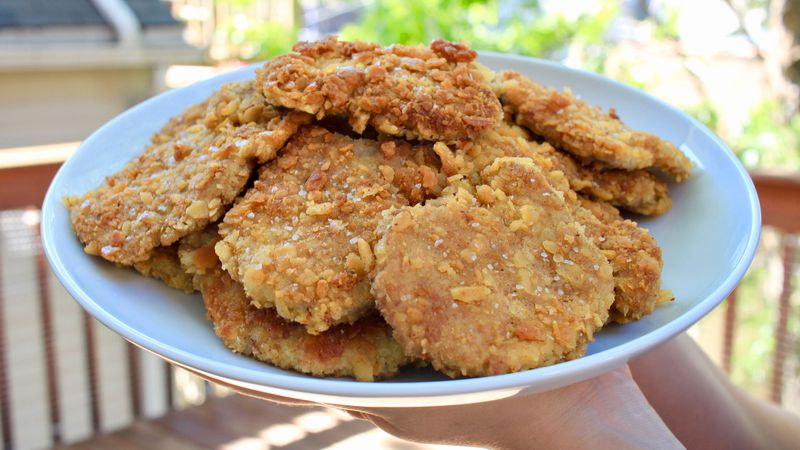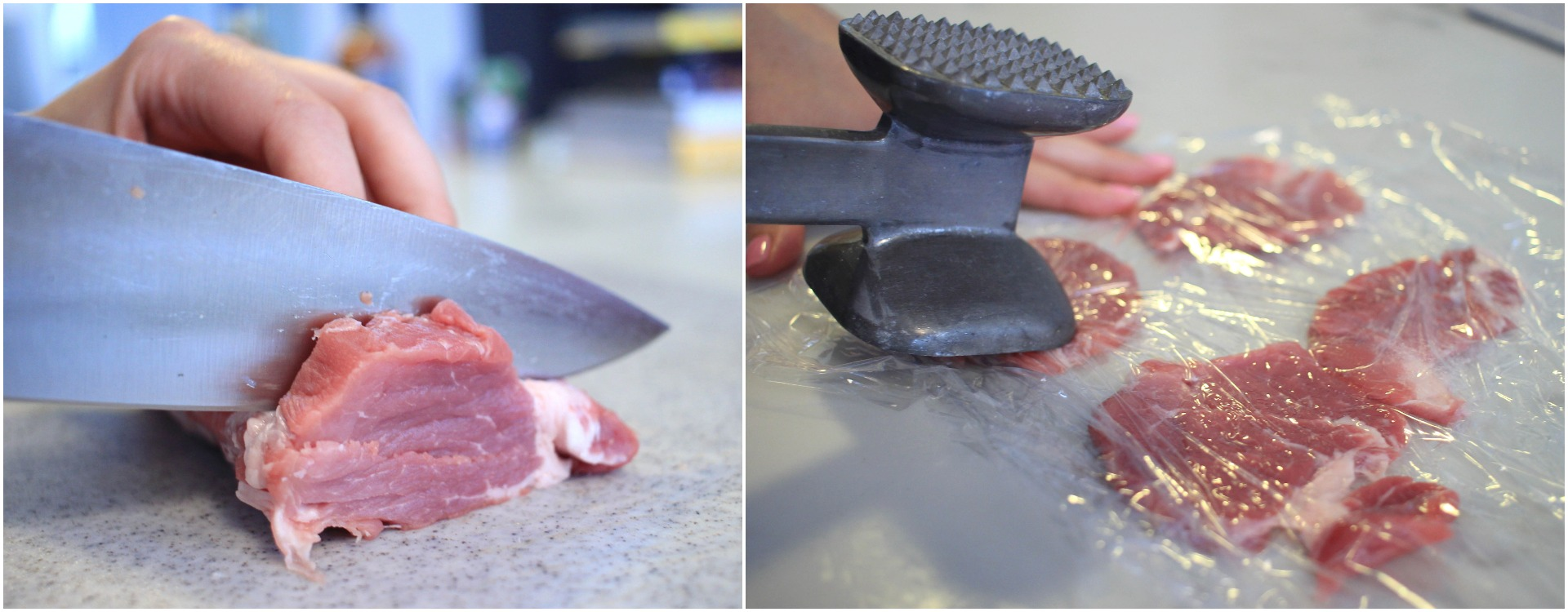Saltine-Crusted Pork Tenderloin Is The Midwest On A Plate
Has the American Midwest earned a reputation as a remedial, cracker-barrel cooking culture? There's some truth in this. We are not Northeast sophisticates, West Coast avant-garde, the smothered-and-fried soulfulness of the South, nor do we have the sea bounties of either coasts. We are hearty kinfolk and constantly cold, and we like our food buttered, pickled, cheese-filled, casseroled, and of homogenous texture. But that is no pejorative. There is pride in our lack of pretense. And when it comes to the deliciousness of our foods (some of it, anyway), the plainness of preparation can belie the power of its directness-to-pleasure-centers.
I am one such West Coast effete (Seattle, no less) who moved to the Midwest 13 years ago and slowly felt my DNA mutate into niceties and corn syrup. My wife is an unadulterated Midwesterner, impossibly polite, and the first time she prepared a family recipe I struggled to stop my upper lip from curling into a sneer. It was a dish her grandmother frequently cooked for her large brood: pork tenderloin crusted with saltine crackers and fried in butter.
"What is deeees?!" my inner voice cried out in a Frenchman's accent. Where is the demi-glace? Was this meat sustainably raised in air-humidified environs? "Try it," my wife insisted.
Of course, I was wrong and the pork was fucking delicious—the crust golden and buttery, even better-tasting cold the next day. Was this story going to end any other way, with my arrogant palate won over and humbled? Now I no longer judge those who crumble Cheetos on their cream-of-chicken soup with spaghetti. This out-of-towner has been adopted, converted, and made Midwest proud.

Saltine-crusted fried pork tenderloin
- 1 lb. pork tenderloin
- 2 sleeves of saltine crackers
- 3 eggs, beaten
- 1 stick of butter
- Canola oil
- Salt and pepper
Take a length of pork tenderloin and slice into 1/2-inch-thick pucks. Place pork pieces between plastic wrap and flatten with mallet, until it's the circumference slightly smaller than your palm. Lightly salt and pepper the meat on both sides.

Dump two sleeves of saltine crackers into a zip-up plastic bag. Place on countertop and mash it with your palms, karate chop it, break apart with tips of fingers. You'll want a variety of sizes, from dust to the size of your pinky nail.

Set up your breading station. From left to right: A plate of the flattened tenderloin, a bowl of three beaten eggs (also salted and peppered), a bowl of mashed crackers (maybe a quarter of the bag), and a clean plate for the egged-and-breaded pork.

Dip pork pieces into egg wash, then onto saltine crumbs, making sure to coat entire piece until there's barely any red from the meat visible. Replenish plate with fresh cracker crumb as necessary.
In a low-sided skillet, add a tablespoon of butter, a good glug of canola oil, and turn on stovetop to medium-high heat.

Once skillet is hot, add the breaded tenderloin pieces, without crowding the pan. You don't want a crackling sizzle; you want hot oil bubbles to percolate on the edges. Don't worry about undercooking/overcooking the pork—you just want the underside to be golden (about 3-4 minutes). Before you flip over, add another tablespoon of butter and another glug of canola to one end of the skillet, get this to temperature—about 30 seconds—then flip the pieces into the fresh buttery area. If you flip into a dry patch, you'll end up with pale, un-fried cracker coating on that second side, while waiting for the pork to finish cooking through.
Once this side is also golden, remove pork to rack and salt/pepper the finished pieces.
Scoop out any orphaned cracker bits so they don't burn, and coat surface with butter and oil. Repeat until you cook through all the breaded pieces (about four batches, depending on how large your skillet is).
Eat fried pork tenderloin hot and crispy as is, or with a dollop of applesauce. Save some and eat cold the next day.


